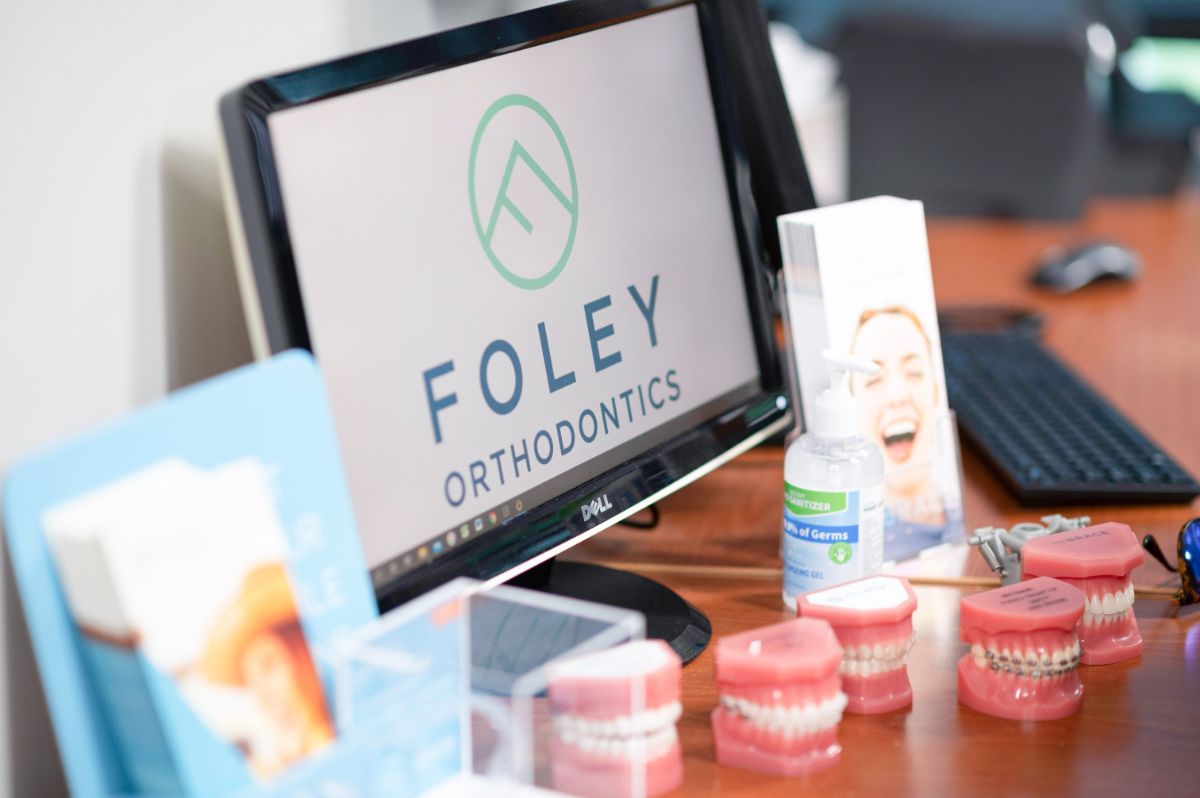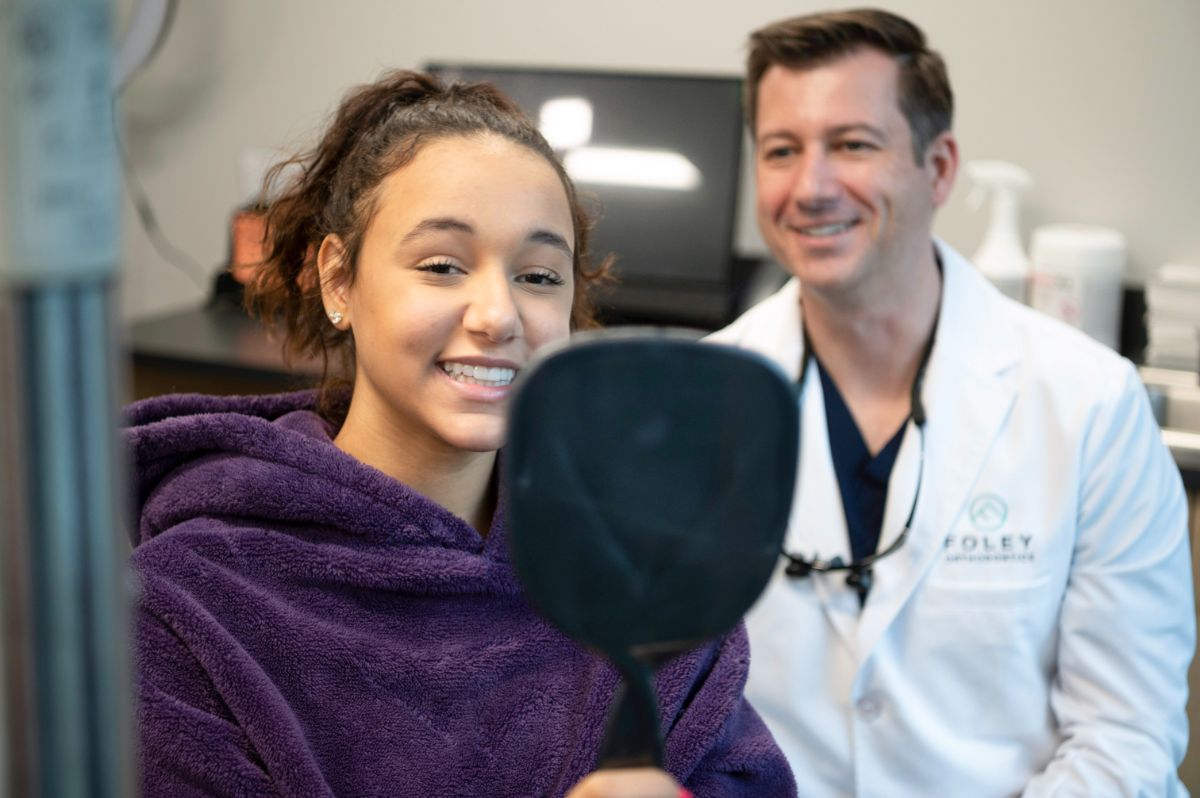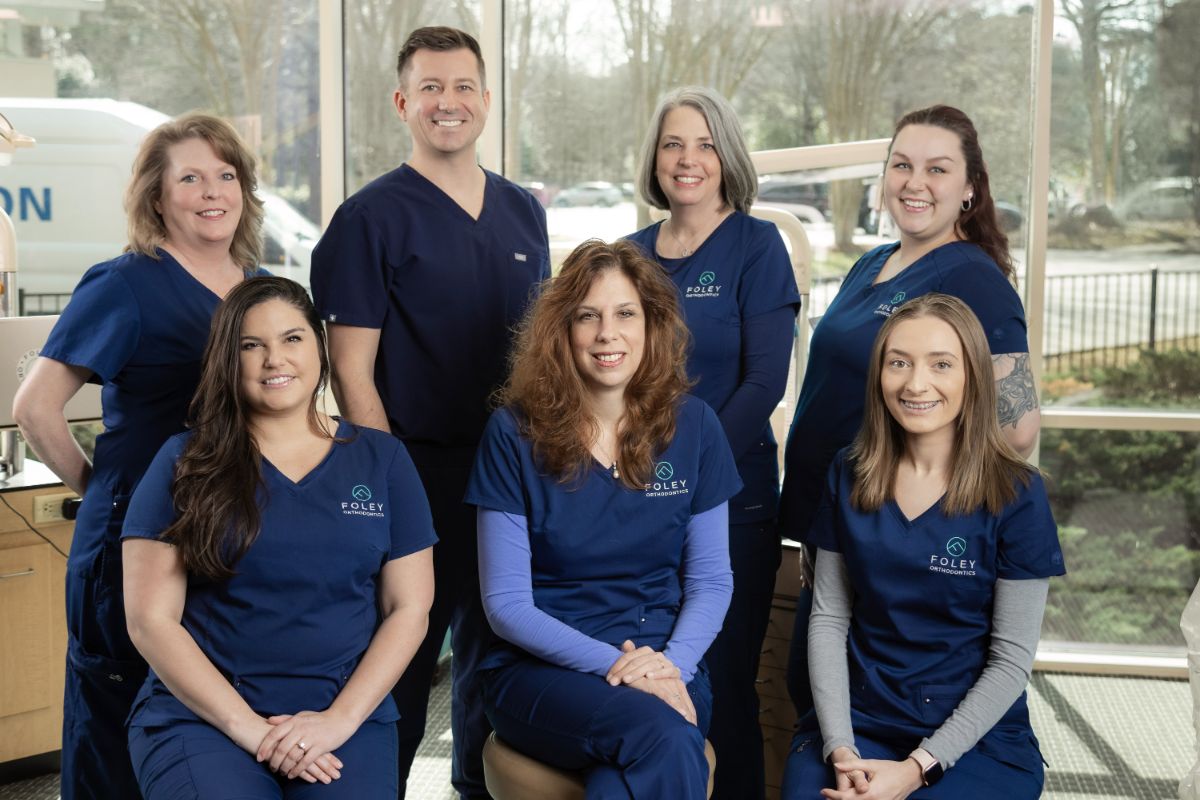A successful orthodontic treatment experience isn’t just about receiving professional and gentle care. You also need to trust that your doctor and your orthodontic team have your best interests in mind and at heart. At Foley Orthodontics, we treat our patients like we would treat our own families. That means our supportive Cary team works passionately with you to reach your smile goals.
We prioritize patient education here at Foley Orthodontics because you should always know what’s going on with your treatment. So, we know you deserve an experienced orthodontist that helps you feel empowered from your first appointment to your most recent.
But what else should you be asking? To help you begin your orthodontic journey, we’ve put together this list of questions to ask before committing to an orthodontic practice for treatment.
Is the doctor a trained orthodontic specialist?
You would think this is a no-brainer for your decision-making, but you might also be surprised to find out that just because your dentist offers orthodontic treatment that doesn’t mean they are specially trained in orthodontics. Many general dentists also provide braces treatment and clear aligner therapy in addition to standard dental services such as cleanings, fillings, crowns, and dentures. While an orthodontist, on the other hand, specializes only in providing orthodontic services.
After a dentist has completed their undergraduate medical education, they must attend a graduate school specifically for dentistry and pass a certification exam before beginning their general dentistry work. The same goes for orthodontists, except they must attend an extremely competitive orthodontic residency program after their general dentistry certification. These programs typically last another 2 to 3 years and include full-time training meaning the orthodontist has:
- Studied the growth and maturation of teeth and jaw
- Been introduced to numerous case studies
- Developed diagnostic skills
- Learned biomechanical techniques to properly move teeth
- Studied how to change the development of the dental alveolar complex and facial growth of younger patients
While there are some exceptions, most dentists simply will not possess this level of in-depth orthodontic training and experience. If you are looking for foundational oral health maintenance, trust your dentist. But, if you need specialized orthodontic care, you can trust that Dr. Foley is a board-certified orthodontist and has proven himself by achieving the highest level of intensive experience. At Foley Orthodontics, the relationship between the patient and doctor is truly a partnership in striving for a common goal: to achieve and maintain a beautiful, healthy smile that will last a lifetime!
What treatment options does the orthodontist offer?
Most patients we treat opt for traditional metal braces to straighten their teeth, and while this is the most common option, you have several other options available to reach your smile goals quickly and effectively. By pairing state-of-the-art technology with our thorough understanding of the movement during facial growth, Foley Orthodontics can successfully treat many dental issues based on your unique needs and goals using InBrace metal braces, clear braces, Invisalign, lingual braces, jaw surgery, facial growth treatment, and accelerated orthodontics.
Metal Braces
Traditional metal braces are the most widely used type of fixed orthodontic appliance. Though past incarnations have been bulky, awkward, and painful, today’s metal braces are smaller, lighter, and more comfortable. We are excited to offer our patients LightForce braces system, because these fully customized braces will give you the most personalized care. No two people are exactly alike and LightForce allows Dr. Foley to truly individualize your orthodontic experience.
Clear Braces
Ceramic braces use the same components as traditional metal braces, but instead of metal, the brackets on the front side of the teeth are made of a transparent or tooth-colored ceramic material. This makes clear braces a common choice for teenagers and older patients who do not like the aesthetic of the metal look. Clear braces require more care as the ceramic pieces can break and are prone to staining depending on your eating and cleaning habits.
LightForce Braces
We are excited to offer our patients LightForce custom 3-D printed ceramic braces system because these fully customized braces will give you the most personalized care. No two people are exactly alike and LightForce allows Dr. Foley to truly individualize your orthodontic experience through indirect bonding where the virtually invisible brackets are placed on a model of your teeth in the exact position your doctor has prescribed. They are fit into trays before being sealed and cured and once ready, the entire appliance is bonded to your teeth making a fit that only you will find comfort in.
InBrace Lingual Braces
Another great cosmetic alternative for straightening your teeth with precision and efficiency without bracket and wire nuisances is InBrace lingual, or hidden, braces. This treatment uses an innovative custom Smartwire Dr. Foley places on the back of your teeth that will gently move your teeth according to your treatment plan. There is no need for monthly adjustments, trays to keep up with, or visible metal appliances to keep you from smiling along the way.
Clear Aligners
Unlike traditional braces, Clear aligner treatment doesn’t rely on a system of metal or ceramic brackets and wires. Instead, it comprises a series of invisible, removable acrylic trays that straighten your teeth by applying steady pressure on your teeth as you wear them. They are replaced every 1 to 2 weeks to make this adjustment gradually. Though you can remove them to eat and brush your teeth, you will need to wear them about 22 hours a day for them to be effective.
TMJ/TMD Treatment
While TMJ disorders are often attributed to an injury or arthritis, other times, they result from an imbalance in the forces of the nerves, ligaments, and muscles. Once we’ve pinpointed the cause, we take a conservative multidisciplinary approach and aim to use less invasive treatments like oral appliances, physical therapy, or trigger point injections.
How frequent are follow-up appointments with the orthodontist?
While your exact follow-up timing will vary depending on the orthodontic treatment plan you and our expert team determine is right for you, we will schedule most patients’ adjustment appointments for about every four to eight weeks. Patients using Invisalign may be seen slightly less frequently, but regardless, these appointments are crucial for your overall orthodontic process!
The average process will take anywhere from 8 to 36 months to achieve your perfect smile, but visible results are evident as early as the first few months with most treatment plans. We know you’re busy, and we value your time, just give us a heads up if you’re running late or need to reschedule, but don’t forget that your participation in the follow-up care is just as meaningful.
Trust your smile to the experts at Foley Orthodontics
Foley Orthodontics is the location for modern orthodontic treatment. We put our office at the corner of Cary Parkway and Lake Pine Drive to make sure great orthodontic care is only a few minutes from your home, work, or school.
There’s never been a better time to reach for the smile you’ve always wanted, so get in touch today to schedule your FREE consultation with our expert orthodontic team!
 Free Consult
Free Consult


